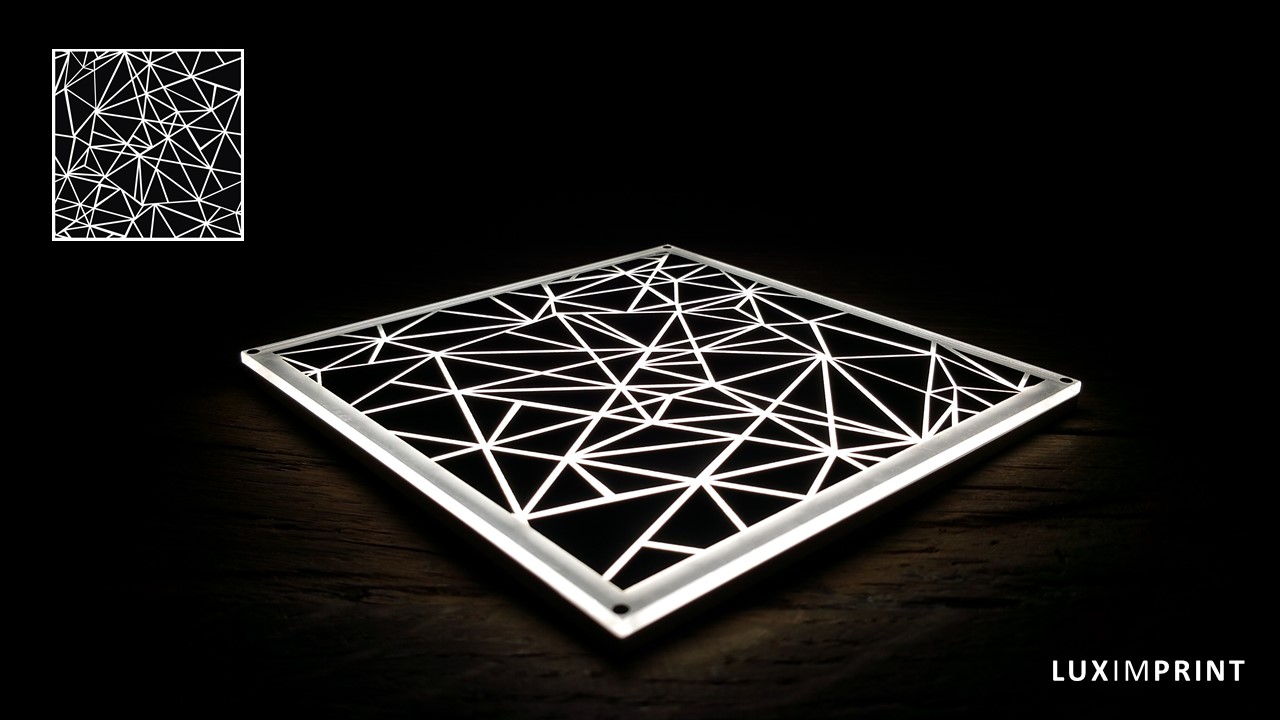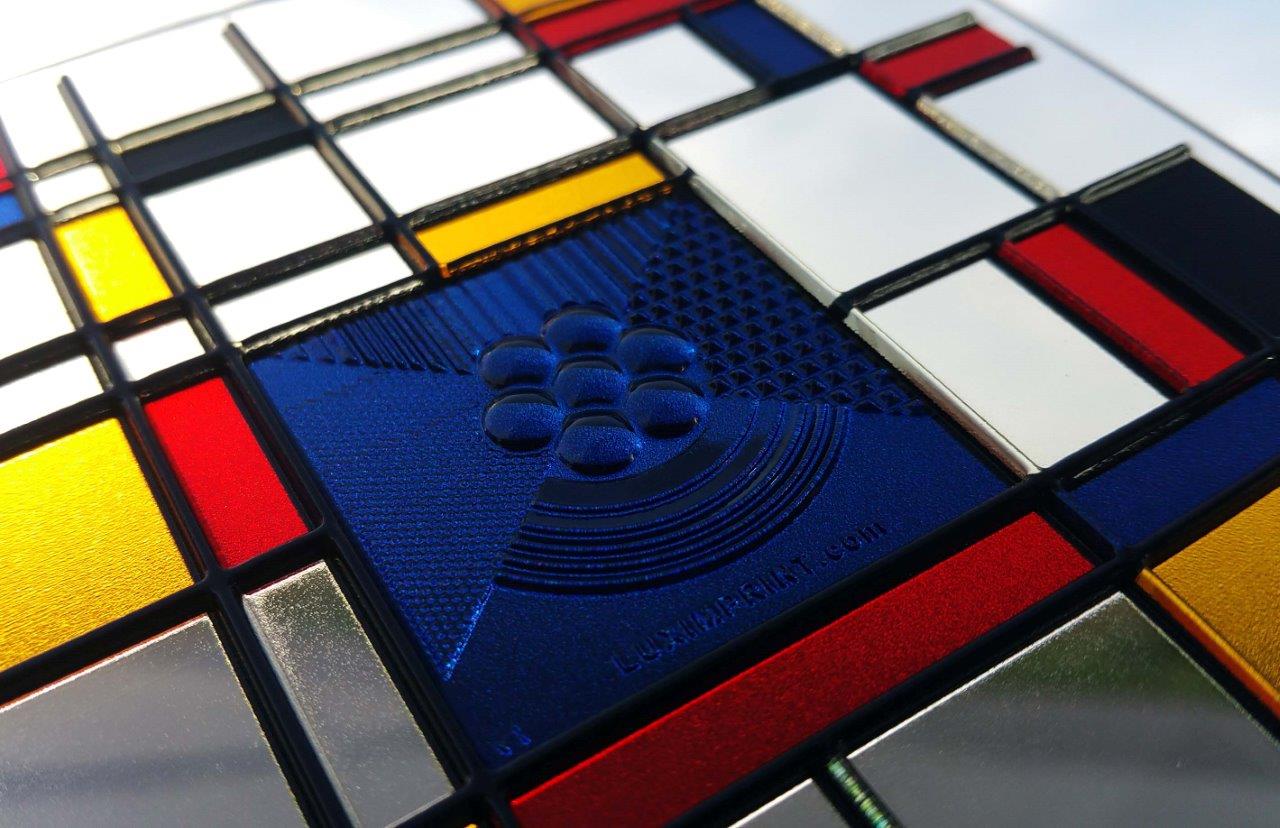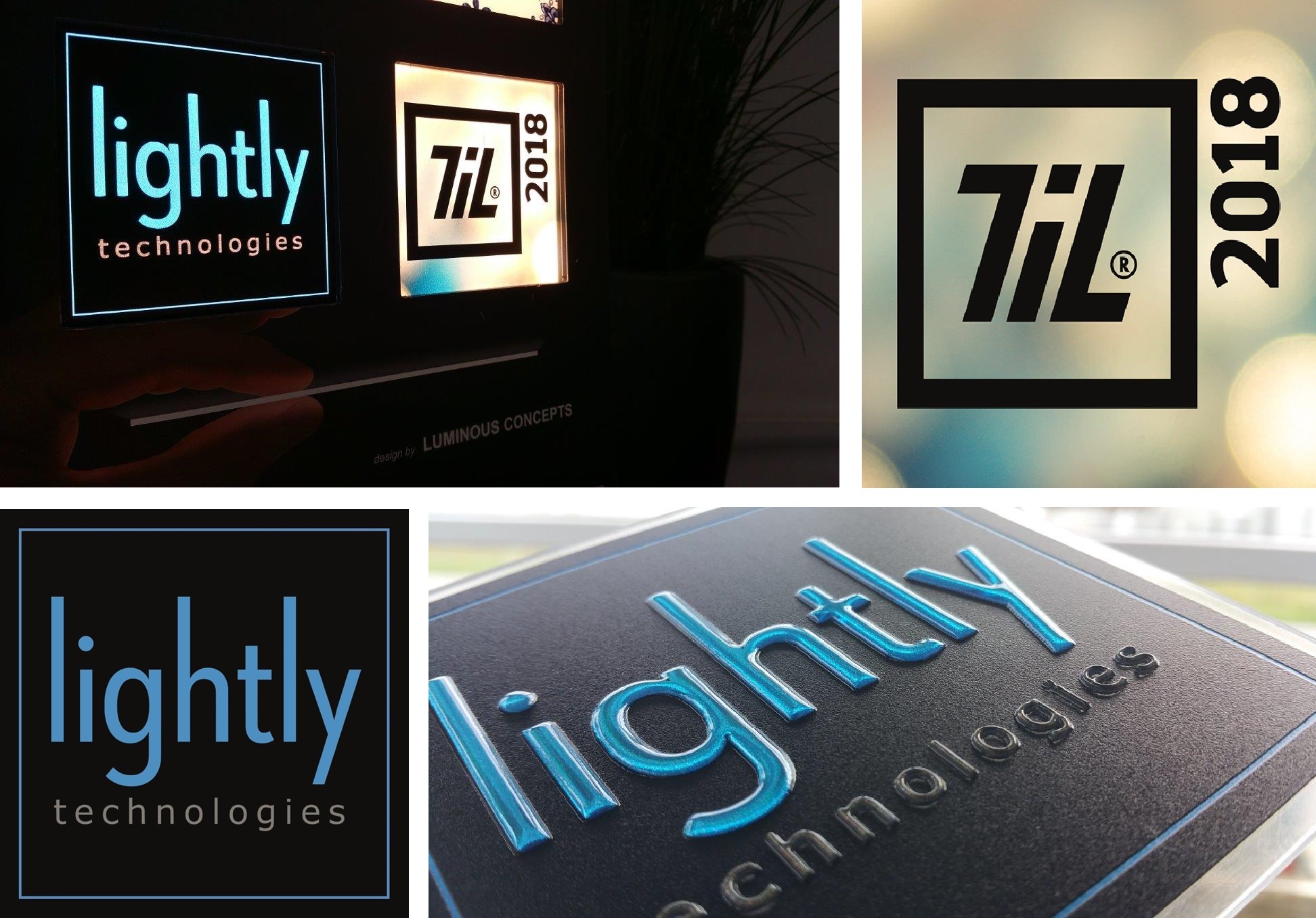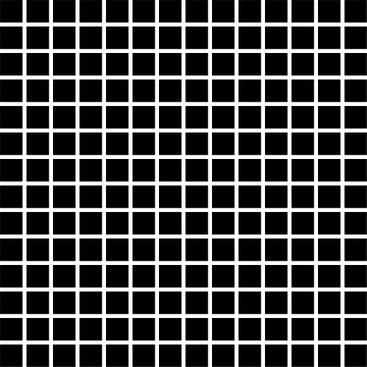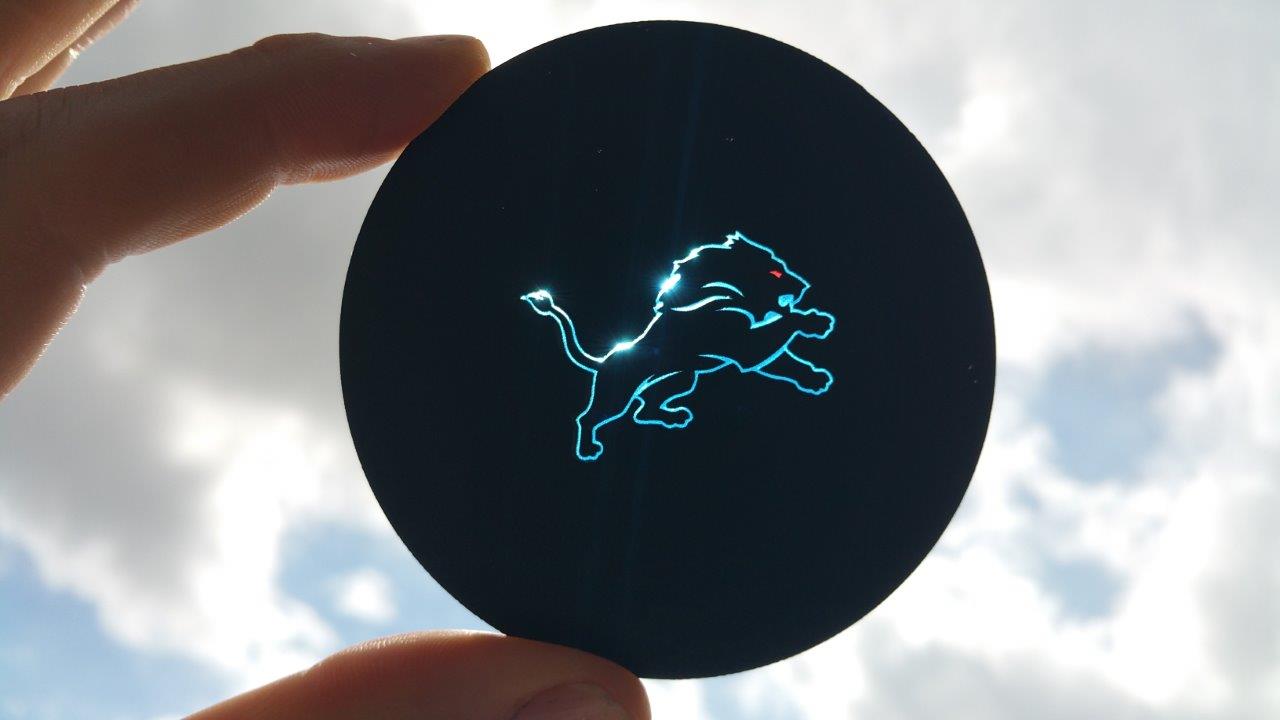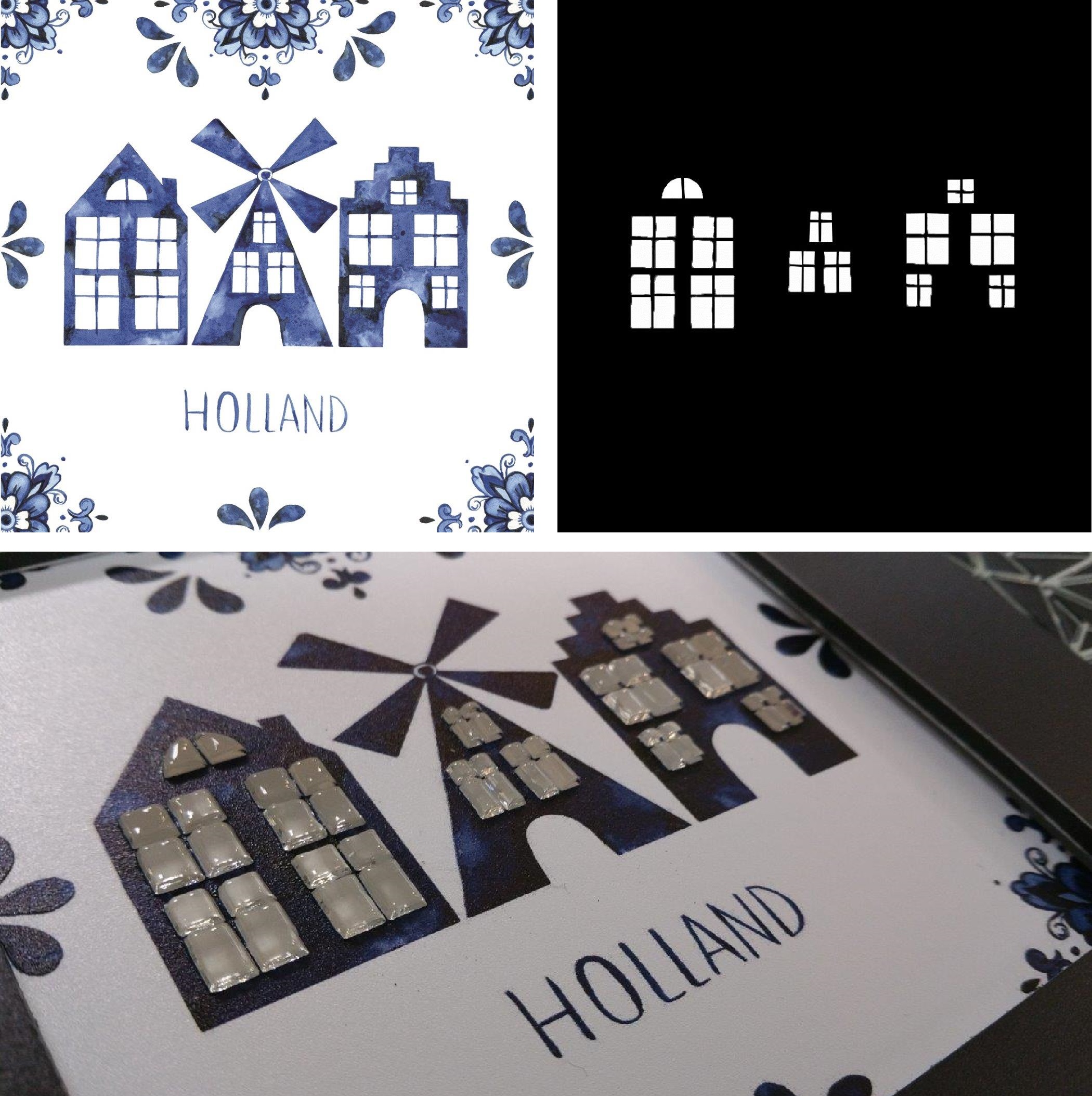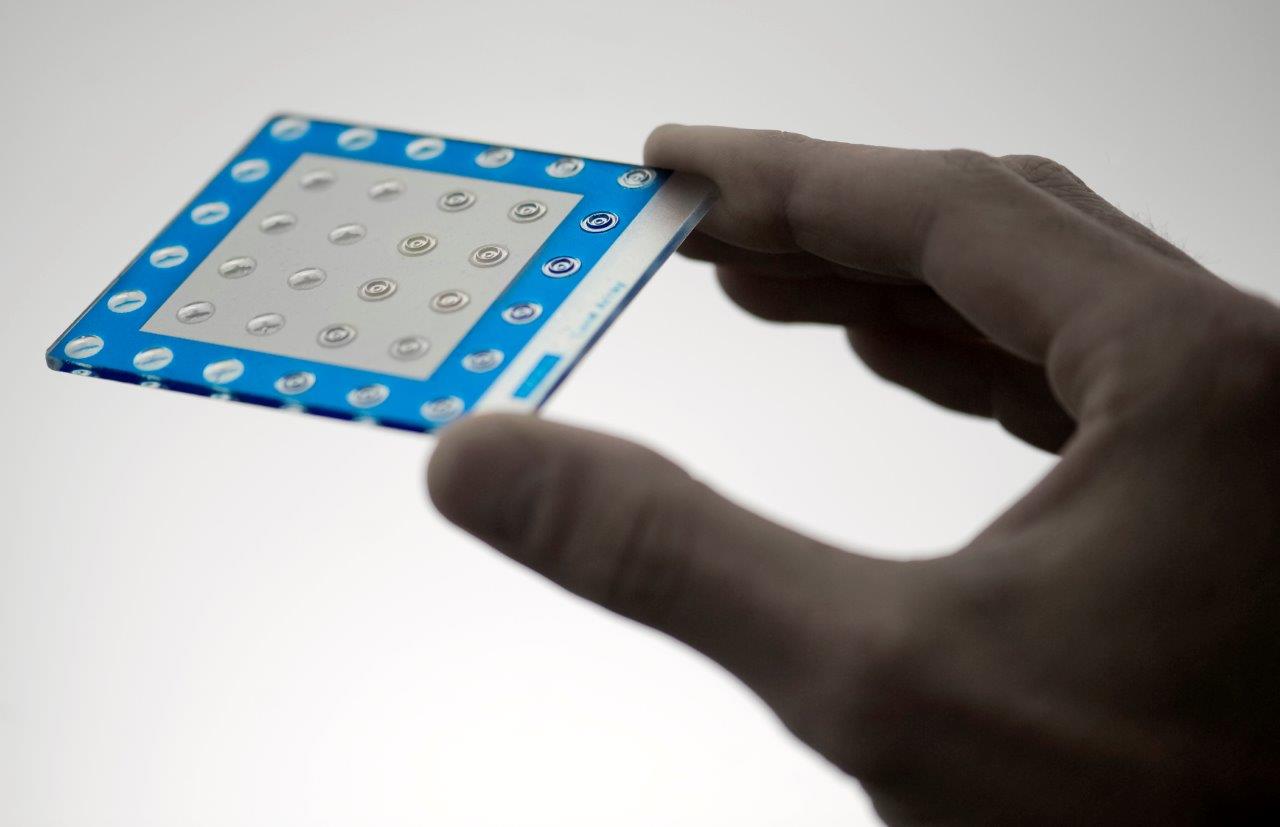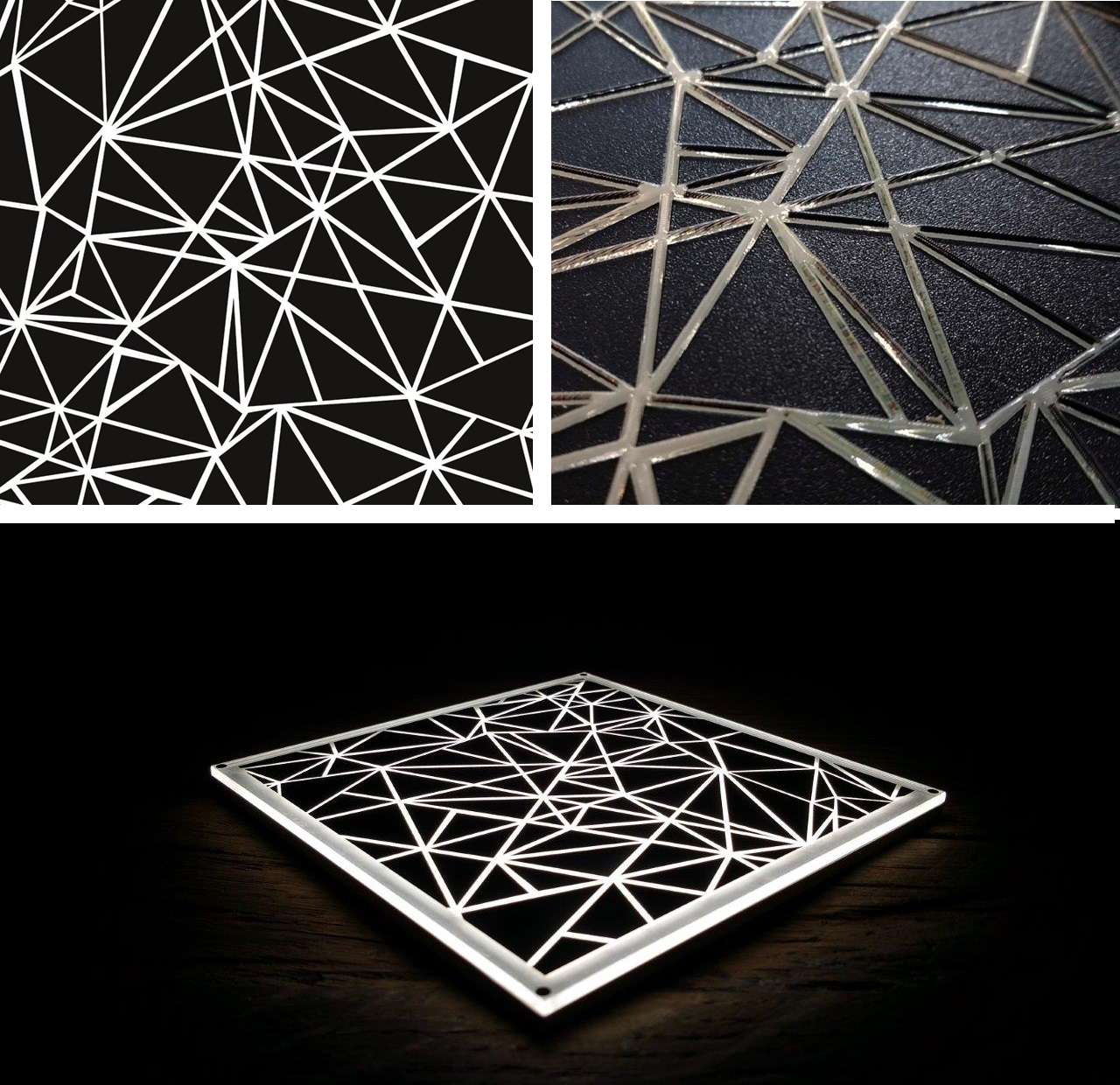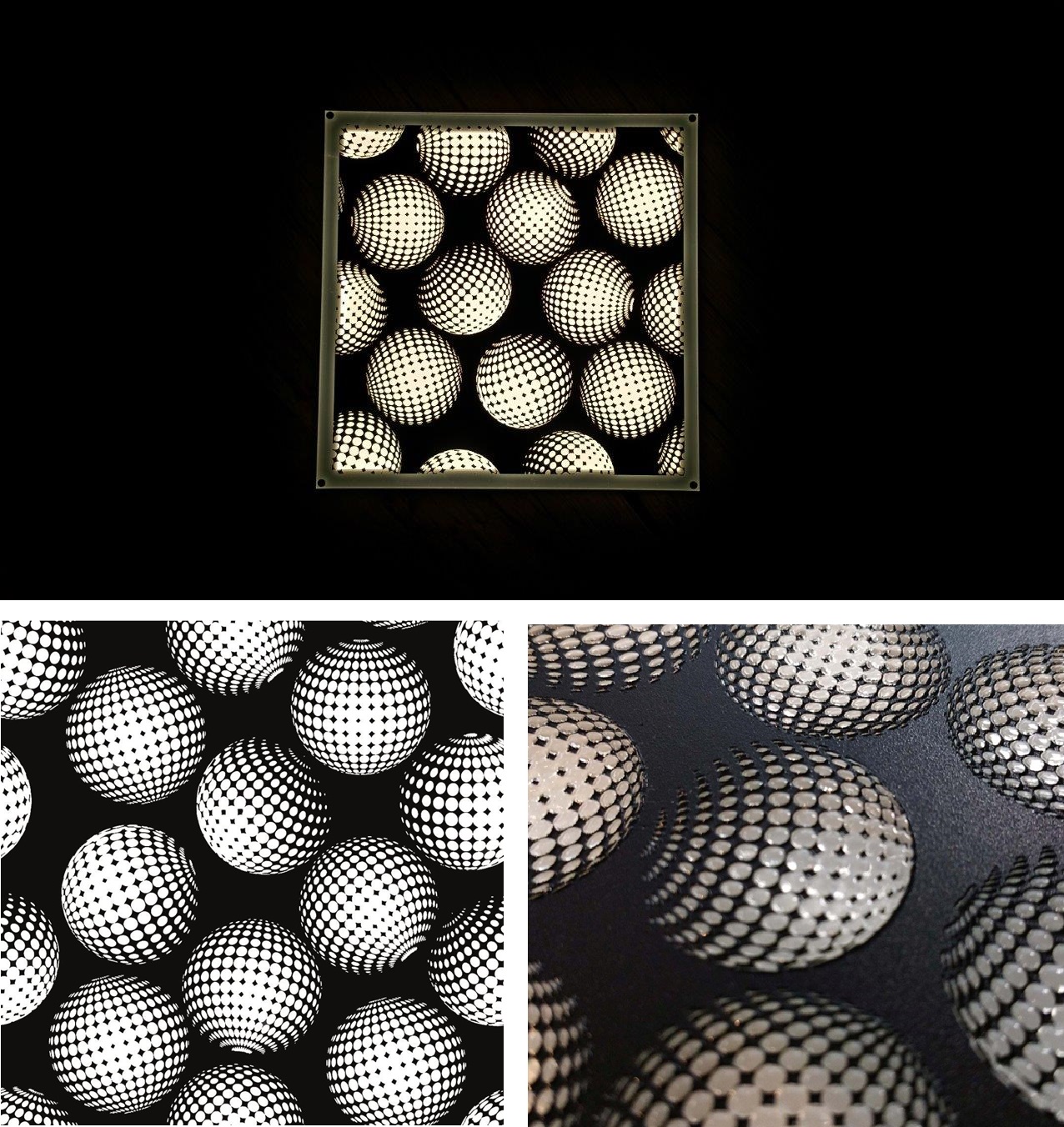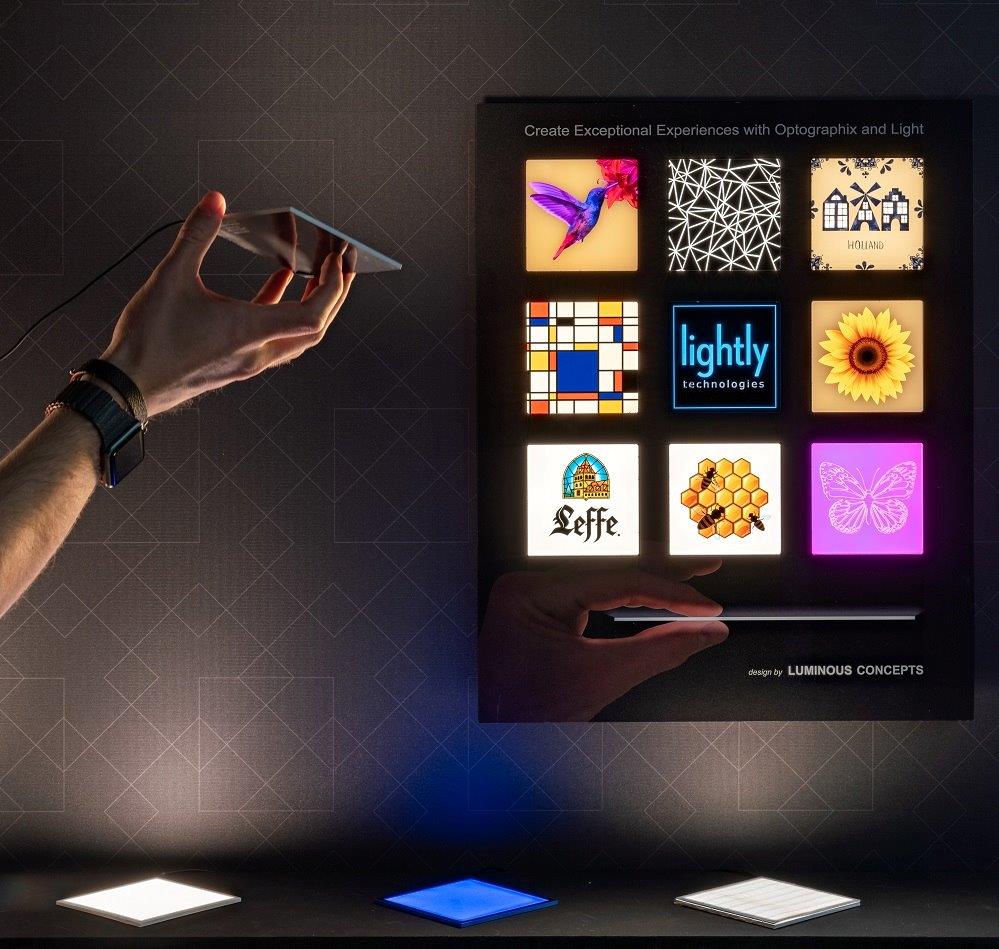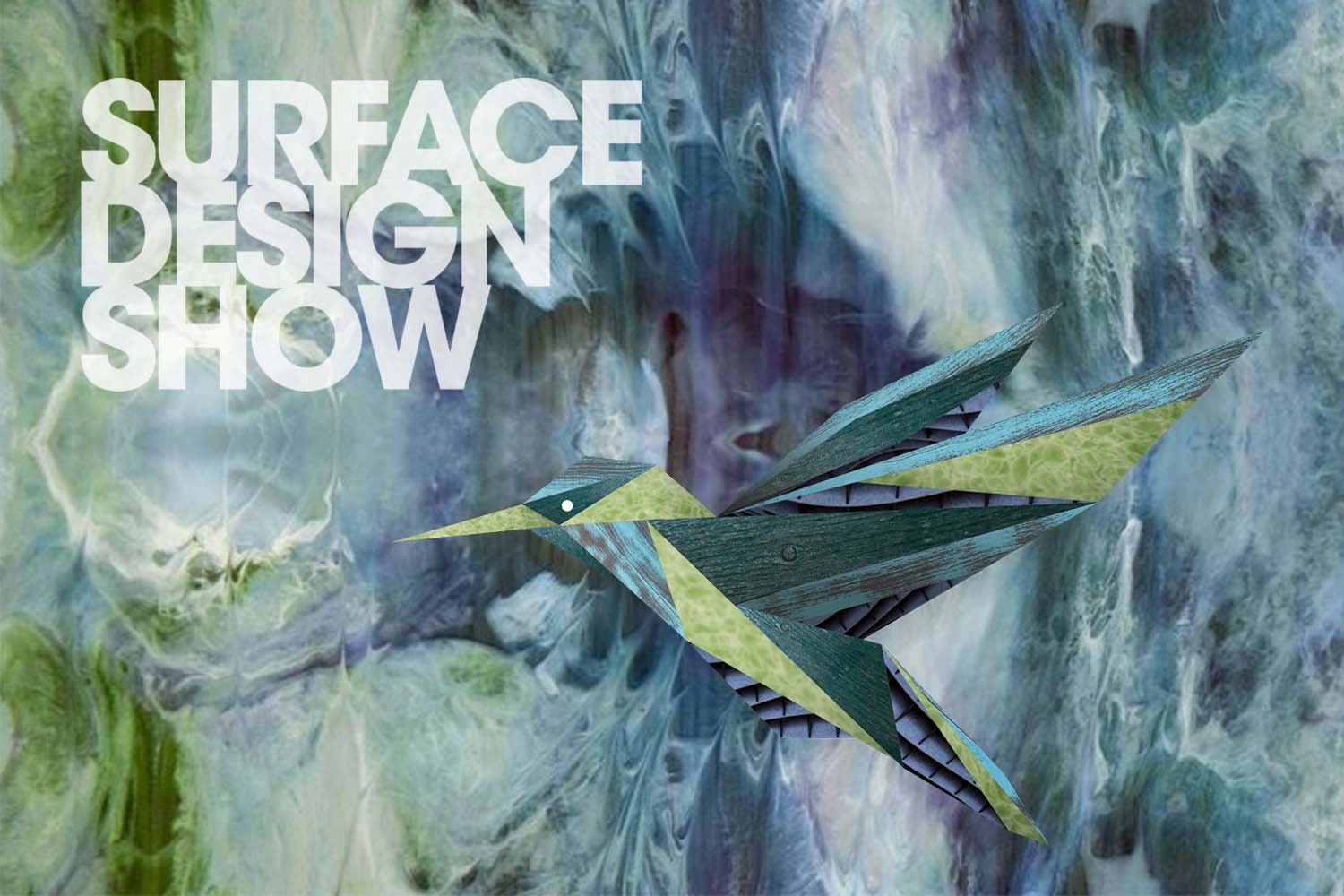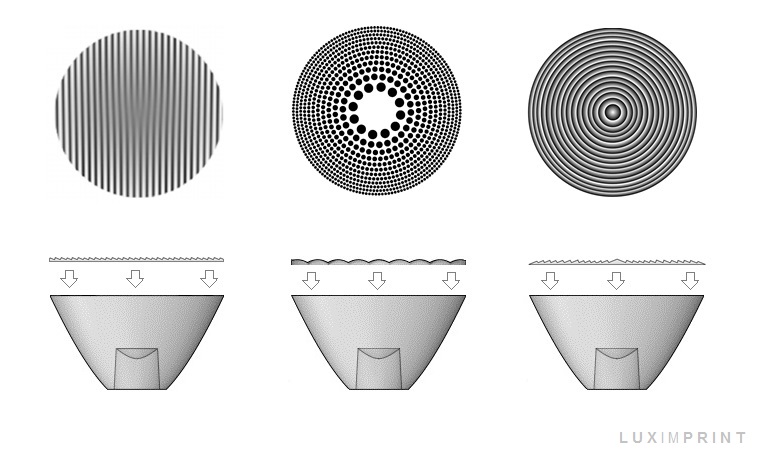Luximprint to Launch Opaque Substrate Masking Capabilities for Enhanced Light Control
Leaving a dynamic period behind us, with our daily lives affected by the COVID-19 pandemic storms, we’re excited to introduce the next range of capabilities for our additive optics fabrication process. At the Luximprint engineering front, some hard work has been done in the past months, resulting in the arrival of some interesting new optical 3D printing capabilities. We’re delighted to announce some new process features for enhanced light control: Seamless in-process integration of ‘Masking’ and ‘Reflecting’ layers along with functional optically 3D printed features. Here is what it includes and why it is so interesting…
Black and White Masking – What?
Lighting solutions – no matter they concern functional or decorative lighting – ask for the most precise light control. When considering side- and backlit applications, either the medium (commonly a translucent sheet) should be uniformly lit, or the light should be coupled out very selectively through precise optical features.
Nowadays, there are solutions available on the market to meet both scenario’s, such as ‘Blackout Materials’, including fabrics and frames, that can additionally be attached to eliminate stray light or other unwanted light sources, or to built light-tight structures.
In any case, however, this concerns a solution built-together of multiple items in order to create a matching solution. Wouldn’t it be greatly interesting to receive the mask and the optical distribution from one and the same process?

Reflection of Light
Reflection appears when light bounces off an object. If the surface is smooth and shiny, like glass, water, or polished metal, the light will reflect at the same angle as it hits the surface (specular reflection). From a functional perspective, however, these surfaces can be used to redirect light indirectly to a given spot. As such, the optical power is not inside the optic, as is the case when using printed optics, but the surface itself becomes the key to master the light. Printed reflectors and reflective surfaces are some of our recent process innovations in that particular area.
Now, with access to some new 3D printing resins, including ‘black’ and ‘white’, it becomes possible to combine optical resins with color resins or, more specifically, black and white tones. While using black resin absorbs the light (see next paragraph), white tints have excellent reflective properties.
A white layer, or multiple white layers, can be integrated into a particular optical solution to optimize total internal reflection. As such, lenses or sheets can be flatter while boosting the same output with only minimal reflection losses.
Absorption of Light
On the contrary to reflecting the light by means of adding a white reflective layer, we can choose for a black absorption layer. In many cases, unused light rays are considered as cumbersome, especially when blinding or unwanted stray light effects are visible.
In addition, blocking the light selectively (or “masking” it), light rays are enabled to leave the transportation medium (mostly PMMA or glass) and get coupled out selectively. This is a very interesting feature to illuminate certain areas from applications while at the same time avoiding the light to travel through other parts of the surface.
BW Tinting – How does it Work?
When allowing the light to travel from the inside to the outside of the sheet – by simply creating an ‘opening’ in the mask design – we’re not done. At this stage, we’re still speaking ‘2D printing’ language with zero optical performance.
In addition, the Luximprint Additive Optics Fabrication process enables us to put optical lens features exactly at the spot where the light is welling-up from the inside of the surface. Rather than enabling the light to travel into any direction, the light rays are ‘re-grouped’ and directed into a specific direction.
Another interesting feature is light coupling by very accurately placed optical droplets. As such, there’s not just an outlet created for the light to pass through, the light rays caught at the surface are pro-actively redirected into a given direction. We’ll be announcing some more news on this exciting topic later.
Here’s an image explaining the masking principle:


Shape Matters – Size doesn’t
As long as we are working on the horizontal plane, there is virtually no limitation set to the complexity and size of shapes. Any pattern, linear repetitive, parametric, circular or triangular can be converted into a masking object. Generally, prints can be as large as the maximum size of the build tray, which measures – in its standard position – 650*650 mm (or beyond, custom).
Other Masking Solutions – Light Gobo’s
Basically, this method is also suitable to create (conventional) light gobos for projection, by simply blocking the light off with outlets in the right shape or typography contour. With our access to Faceted Lens Technology, however, we expect to have a much more efficient way of controlling light for architectural lighting applications, while significantly reducing the overall energy consumption and light pollution.
Well, we hope that this post will offer you new inspiration for the functional and decorative use of light. In case of any questions, please don’t be afraid to talk back. Our Sales Engineers would be delighted to find out what’s possible for you and provide you with more details and specifications on our evolving capabilities.
Samples of this new process capability can be obtained from the Luximprint Sample Shop.

